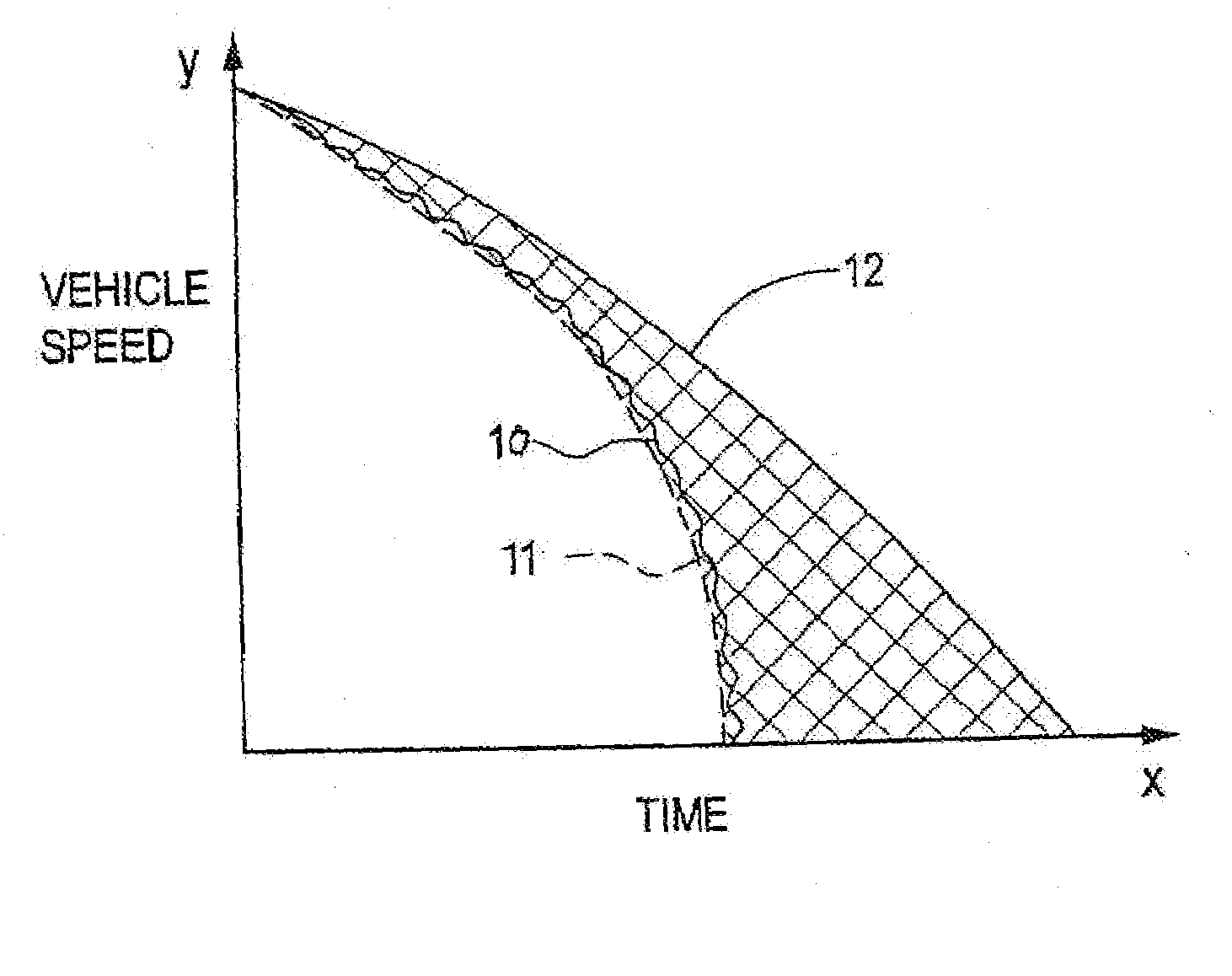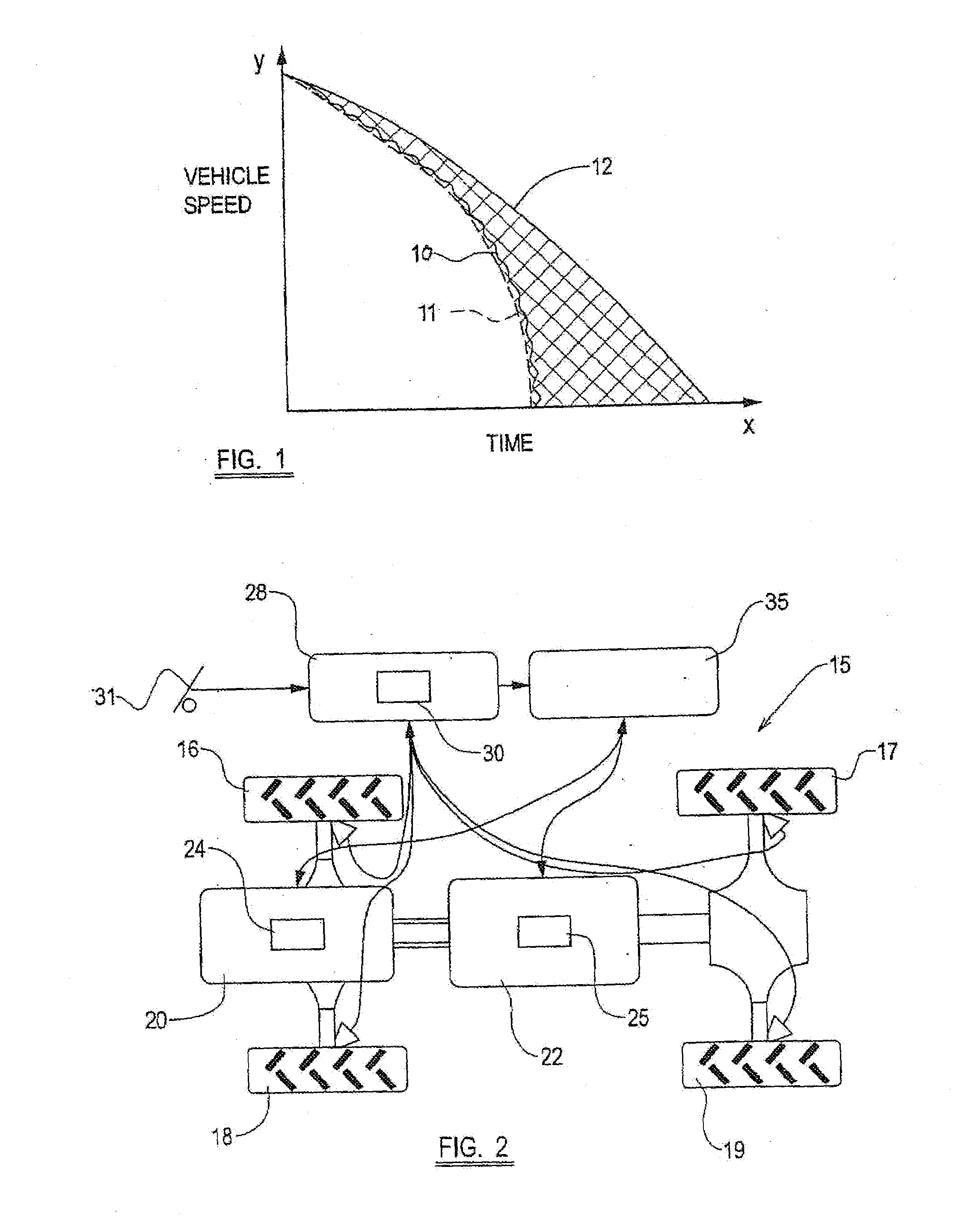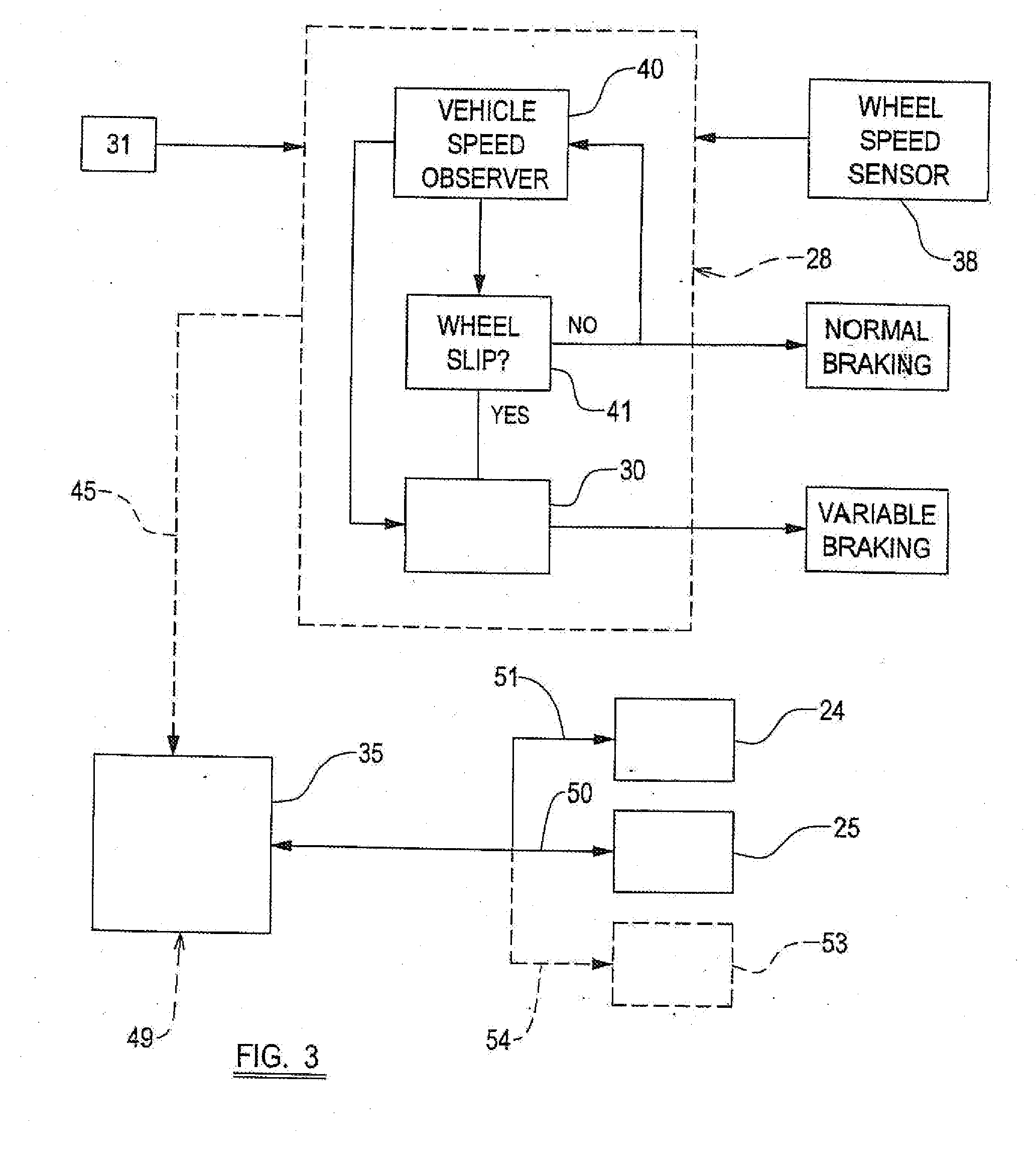Method of Braking a Vehicle
a technology of braking and vehicle, applied in the direction of brake action initiation, braking system, position/direction control, etc., can solve the problems of vehicle instability, wheel lock-up, etc., and achieve the effect of accurate determination
- Summary
- Abstract
- Description
- Claims
- Application Information
AI Technical Summary
Benefits of technology
Problems solved by technology
Method used
Image
Examples
Embodiment Construction
[0037]Referring to FIG. 2, a vehicle 15 includes in this example, four ground wheels 16-19, each of which are drivable from a prime mover 20, which in this example is a conventional engine, via a transmission 22.
[0038]The engine 20 is controlled by an engine controller (such as is known as an engine management system) 24, whilst the transmission 22, in this case a CVT transmission 22, is controlled by a transmission controller 25.
[0039]Each of the wheels 16-19 are braked wheels, there being a braking system 28 with ABS capability, with an ABS controller 30, and in this example a mechanical brake control namely a foot pedal 31. The braking system 28 could be an electrical braking system (EBS) if desired with a non-mechanical brake control, or may have electro-mechanical control, and where a mechanical brake control 31, this could, if desired, be a hand operated control.
[0040]In accordance with the present invention, the vehicle 15 includes a torque controller 35 which is connected to...
PUM
 Login to View More
Login to View More Abstract
Description
Claims
Application Information
 Login to View More
Login to View More - R&D
- Intellectual Property
- Life Sciences
- Materials
- Tech Scout
- Unparalleled Data Quality
- Higher Quality Content
- 60% Fewer Hallucinations
Browse by: Latest US Patents, China's latest patents, Technical Efficacy Thesaurus, Application Domain, Technology Topic, Popular Technical Reports.
© 2025 PatSnap. All rights reserved.Legal|Privacy policy|Modern Slavery Act Transparency Statement|Sitemap|About US| Contact US: help@patsnap.com



